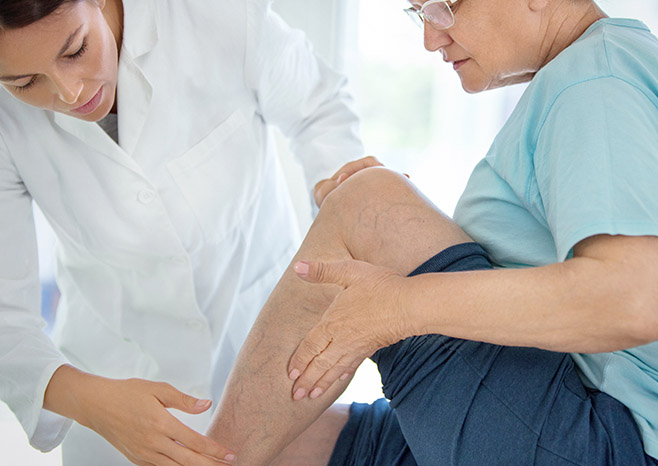
Skin Conditions & Diabetes
Diabetes is a full-body disease and can result in symptoms on the body’s largest organ: the skin.
Diabetes is often first detected through skin symptoms. Symptoms of diabetes appear on the skin when blood sugar levels are higher than they should be. Many of these symptoms are common skin conditions that people with diabetes are more susceptible to. Other symptoms and skin conditions are exclusive to those living with diabetes.
According to the American Academy of Dermatology, the skin symptoms below are warning signs your blood sugar levels are too high:
Discoloration
Yellow, red and brown patches characteristic of necrobiosis lipoidica can appear similar to pimples. Over time, these patches can become swollen, itchy and painful, and can go through active and inactive cycles.
Dark, velvet patches of skin can be a sign of acanthosis nigricans. This symptom can present anywhere on the body, but typically appears on the neck.
Light brown, scaly, circular or oval patches that appear on the fronts of legs can be a sign of diabetic dermopathy. These patches look like age spots, but unlike age spots, they typically fade after 18-24 months.
A red, red-brown or skin-colored ring- or arc-shaped area appearing on fingers, ears or other places far away from the trunk, could be disseminated granuloma annulare. This condition can be treated with medication.
Texture Changes
If the skin anywhere on your body starts feeling thicker than usual, it might be a sign of diabetes complications.
Blisters appearing suddenly can also be a sign of diabetes. Unlike blisters that appear after a burn, blisters caused by diabetes — known as bullosis diabetricorum — are not painful.
The sudden appearance of a large number of skin tags or of skin infections, rashes, sores and wounds that don’t heal easily, can also be a sign of diabetes.
The main way to avoid the diabetic skin conditions listed above is through diligent management of blood sugar levels and maintaining good skin hygiene. If you notice any of these symptoms on your skin, visit your doctor to get tested for diabetes or to adjust your diabetes treatment plan.
Sources:
https://www.diabetes.org/diabetes/complications/skin-complications
https://www.aad.org/diseases/a-z/diabetes-warning-signs




